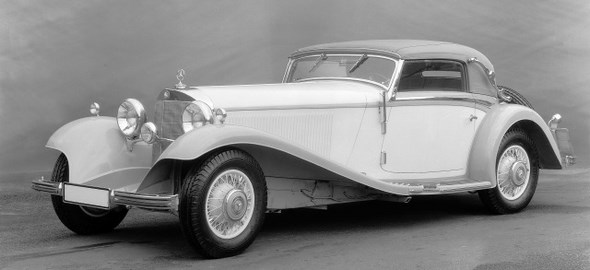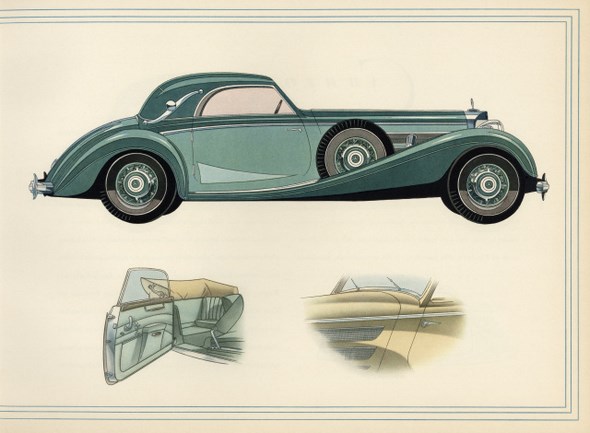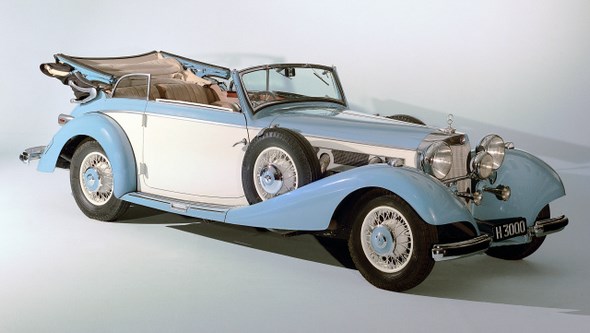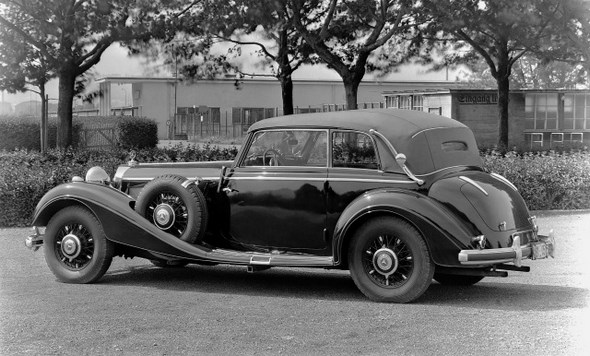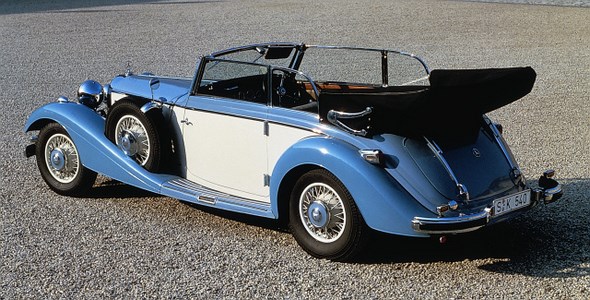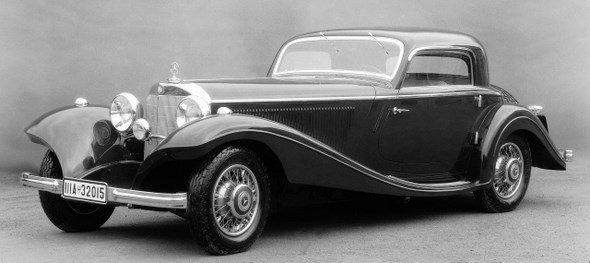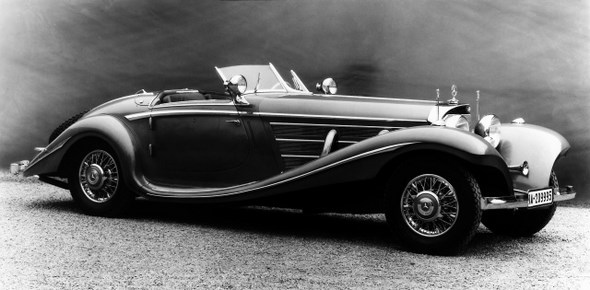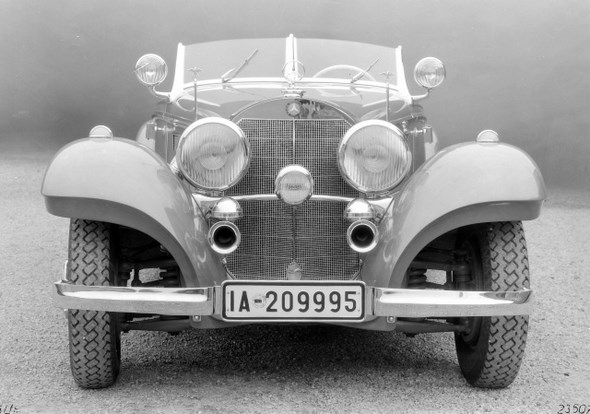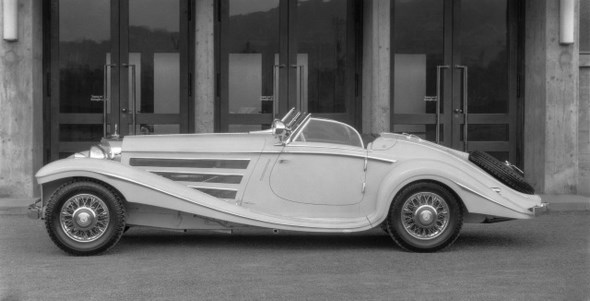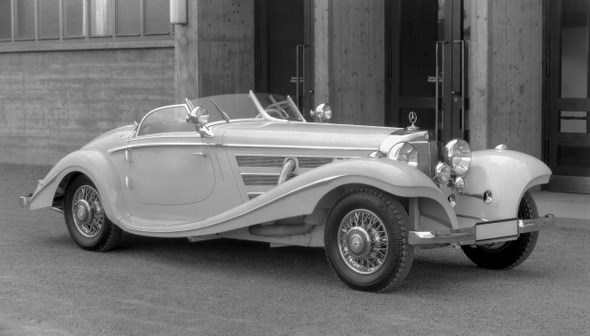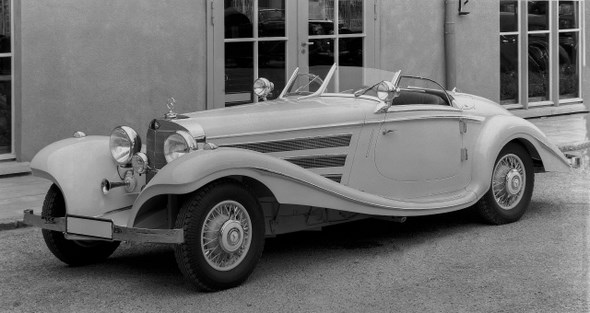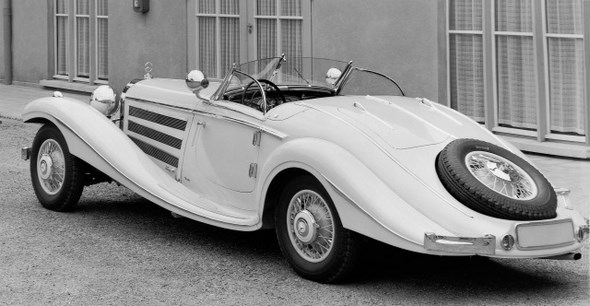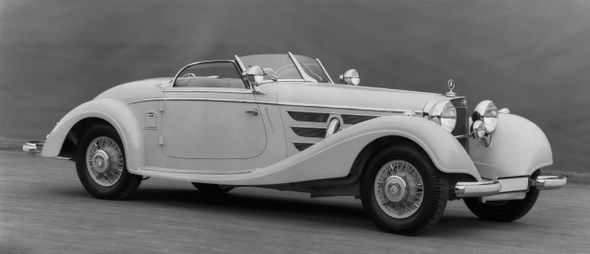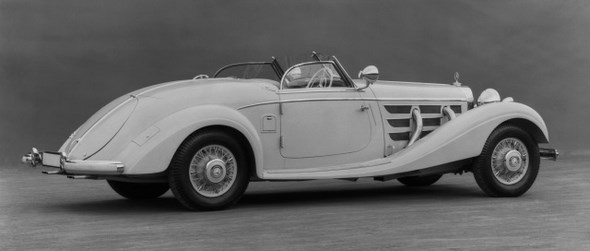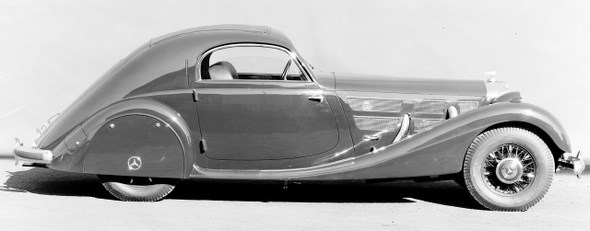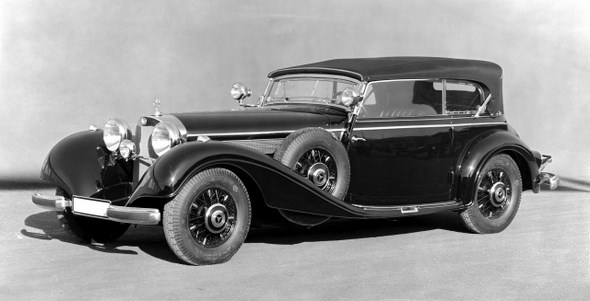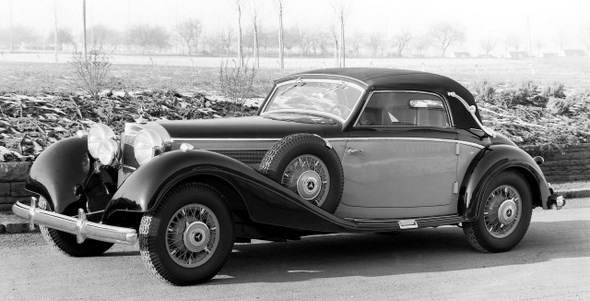Mercedes W29 500K / 540K 1934 – 1939


For discerning, performance-minded clients, who had been extensively influenced by the large-displacement, high-powered models of the Mercedes-Benz “S” series, the 380 was in many cases seen as underpowered.

Daimler-Benz’s answer was both swift and comprehensive: as early as March 1934 at the International Motor and Motorcycle Show in Berlin, where the 380 had been launched just one year previously, the company unveiled a new model that was to take over from the 380 in the course of the year.

The new 500 model with supercharger” was exhibited in Berlin in just one version, a so-called “Autobahn-Kurierwagen”, which, according to the price list for the vehicles on show, “was specially constructed for particularly high speeds” and was described in a sales department circular as the “star attraction of the show”.

Conversely, with four different body versions, almost the entire 380 range was on display. Although imminent, the replacement of the 380 by the 500 had not yet been made official.
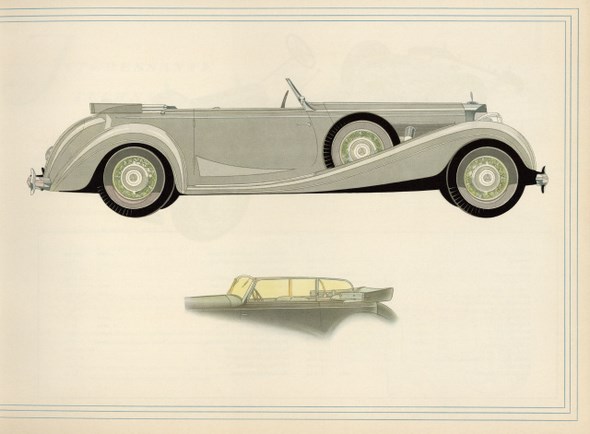
In June 1934, seven versions of the 500 with supercharger were added to the price list. In addition to the chassis-only version, there was a four-door saloon, a two-seater roadster with two occasional seats, Convertibles A, B and C as well as a two-door open tourer.
The price of each variant was RM 22,000, while the chassis-only version cost RM 15,500.

The same price list already described the 380 as a “transitional model” with “restricted availability”. The last 380 was produced in July 1934, two months after series production of the five‑litre model had commenced.
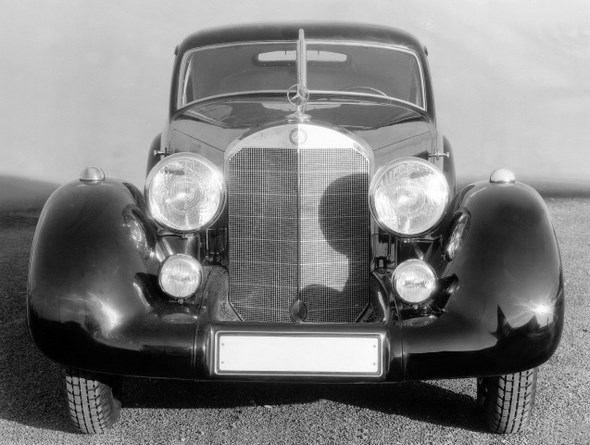
In official announcements and publications, the five-litre supercharged model, which was given the internal design code W 29, was referred to in most cases as the 500 with supercharger”.

The now generally used designation 500 K tended to be employed with some restraint. That was to change with the launch of the larger-displacement, yet otherwise broadly unchanged successor model.
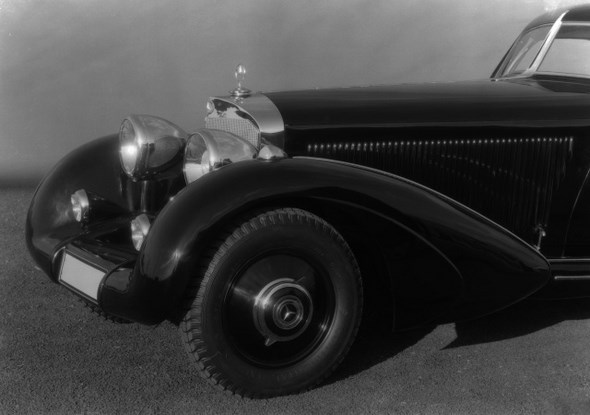
Although still referred to as the 540 with supercharger” at its launch in October 1936, the somewhat catchier name 540 K had started to become generally established by November of the same year.
The conversion of the 3.8‑litre engine (M 22) to the five‑l itre power plant (M 24) for the 500 K involved some extensive modifications. With the bore and stroke each being increased by 8 mm, this called for a new crankshaft. The power output was thus raised to 100/160 hp.

At the end of April 1936, the displacement was further increased to 5.4 litres. This was achieved by adding 2 mm to the bore, while the stroke was lengthened by 3 mm.

This increased the power output to 115/180 hp. It was September 1936 before the model designation was brought into line with the increased displacement. The 540 K had its official launch in early October at the Paris Motor Show.

The 500 K used a Mercedes-Benz overdrive transmission with semi-automatic gearshift. Shifting from third (direct) gear into overdrive did not require use of the clutch.

Upon the transition to the 540 K, the same transmission was initially retained, the only modification being that what had previously been the overdrive was now the fourth (direct) gear thanks to changed transmission ratios.
In February 1939, the 540 K and the “Grand Mercedes” were made available with a five-speed transmission that reduced the revolutions in fifth gear by 20% in comparison with fourth gear.

The chassis of the 500 K and 540 K had a wheelbase of 3290 mm and, as familiar from the 380, was available in two versions. In addition to the standard version, there was a variant in which the radiator, engine/transmission unit, steering gear and seats were all set to the rear by over 10 cm.
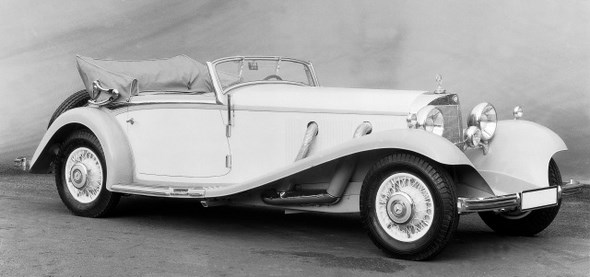
As an additional option not included in the price list, it was also possible to order a chassis with the shorter 2980 mm wheelbase on which to mount a roadster or Convertible A body.

Even though the catalogues and price lists from that time give the impression of serial production, these vehicles were extensively custom-built strictly in conformance with the individual wishes and requirements of the customer.

With its coachwork for the eight-cylinder sports cars, the “special vehicle production facility” in Sindelfingen under Kurt Ahrens attained a generally acclaimed and virtually unsurpassable standard of beauty and quality of workmanship.
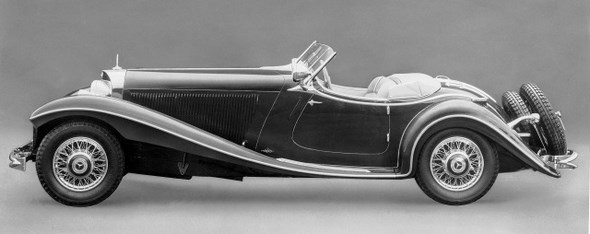
The original range of available bodies for the 500 K was extended in autumn 1934 to include an exceptionally elegant Special Roadster, which was unveiled at the Paris Motor Show in October and which cost RM 4,000 more than the other variants.

In February 1935, the four-door saloon gave way to a two-door version. In October 1935, the Paris show witnessed the launch of a new, captivatingly beautiful version of the Special Roadster, which, costing RM 28,000, was the most expensive variant of the W 29.

While the roadster, Special Roadster, Convertible A and motorway courier were mounted on the chassis with rear-set engine, all the other body variants came with the standard chassis.
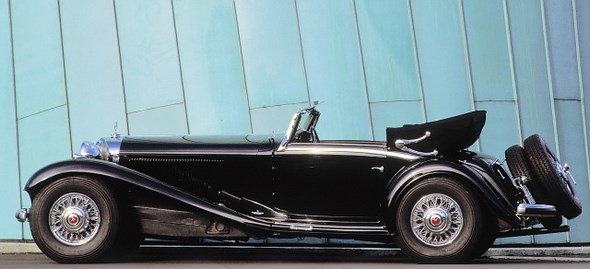
Following the transition to the 540 K, the February 1937 price list no longer included the roadster Autobahn-Kurier and motorway courier versions. One year later, in February 1938, the same fate was to befall the Convertible C.

At the same time, the International Motor and Motorcycle Show in Berlin provided the backdrop for the launch of a modified variant of the Special Roadster based on the standard chassis with design modifications mainly to the front wings and rear section.

From February 1938, the other two-/three-seater body versions ceased to be available on the chassis with rear-set engine. The open tourer was also dropped from the February 1939 price list.
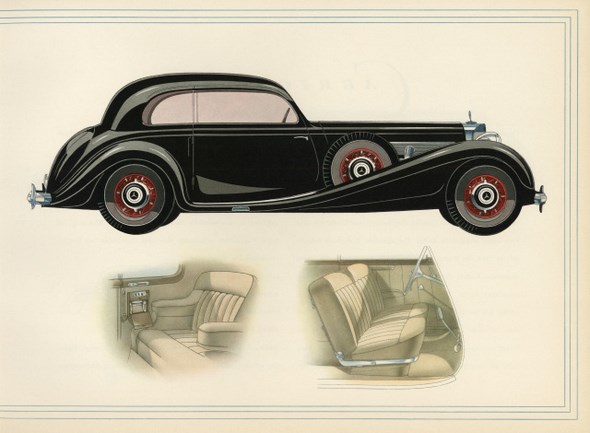
Interestingly, this version continued to be included in the catalogue, as were two body variants that did not show up in any price list: a two‑seater sports coupé and the same design in the form of a “combination coupé” or, to use present-day terminology, a roadster with hardtop.
Regardless of the variants in the price list or catalogue, the Sindelfingen facility produced numerous non-standard bodies, sometimes in response to specific customer wishes, but sometimes on its own initiative.

A particularly famous example of such a vehicle was the 500 K coupé of 1935 driven by Rudolf Caracciola, which was known at the time as a special roadster, special coupé or sports saloon. This was a closed version of the Special Roadster in its first design from 1934.
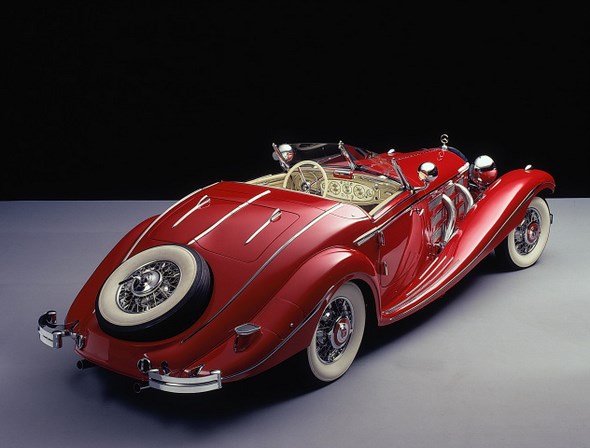
Between February 1934 and November 1939, the Untertürkheim plant produced a total of 761 chassis of the two W 29 models, 342 with five-litre displacement and 419 with 5.4-litre versions.

Seventy chassis were supplied to specialist coachbuilders, while the other 691 units were fitted with bodies at the special vehicle production facility in Sindelfingen. The top-seller was the convertible B with 296 units, followed by the Convertible C and Convertible A with 122 and 116 vehicles, respectively.
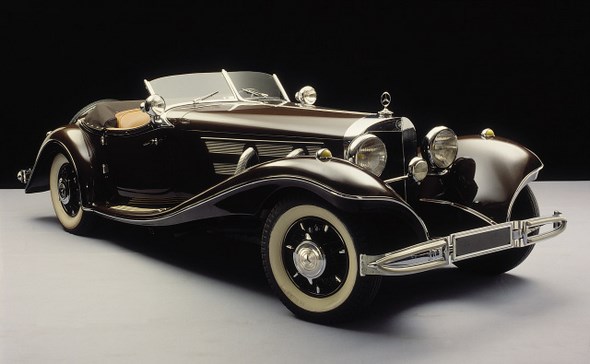
Even the exclusive Special Roadster had a total production run of around 50 units, whereas only 12 of the various coupé variants were manufactured, with as few as just six buyers being found for the Autobahn-Kourier. The statistics were rounded off by 53 saloons and 28 open tourers.
In 1939, experimental 5.7-litre engines were built based on the M 24. These engines had a 7 mm wider bore, but 5 mm shorter stroke than the 5.4‑l itre unit.

They cannot have been of great importance, because Daimler-Benz was working intently on the new V12 engines M 148 and M 157, which were already at an advanced stage of development.

The frequently encountered assertion that the replacement of the 540 K by a 5.7‑litre variant had been planned for spring 1940 and been prevented only by the outbreak of war is, therefore, not only without a convincing explanation, but also totally devoid of proof.

Nevertheless, the ominous 580 K, the name given to the phantom model despite it having a displacement of just under 5.7 litres, continues to ghost its way through the literature at regular intervals.

By contrast, there was no question sorrounding the existence of the 20 armour-plated special two-door saloons, which were produced in connection with the “Aktion P” an initiative of the Reich Chancellery in the summer of 1942 in the wake of the assassination of General Heydrich.
To meet the order for 20 armour-plated 540 K saloons, Daimler-Benz used an ex-factory chassis that was still in stock at the plant in addition to 19 vehicles that had already been delivered to customers and requisitioned by the Wehrmacht.
The chassis of these 19 vehicles were restored to ex-factory condition in Untertürkheim before being fitted with armour-plated bodies in Sindelfingen.

The vehicles were delivered between November 1942 and February 1943. In November 1943, an order was received for a further 17 replacement bodies of the same type.
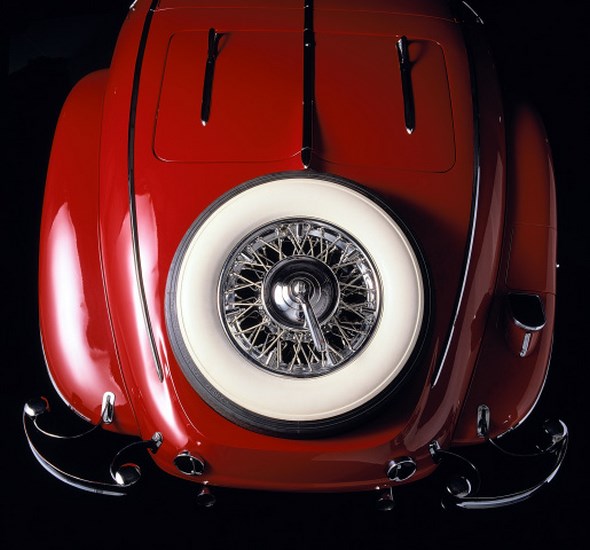
However, there is no proof that those bodies were actually delivered or that they ever went into production. At least one exemplar of the specially armoured two‑door saloons managed to survive the turmoil of the final years of the war and the early post-war period and has long been on display at the Technical Museum in Prague.

Another special model that is often associated with the 540 K, and which actually shares certain characteristics, bears the internal designation W 24 and is sometimes referred to within the company as the 540 K long.
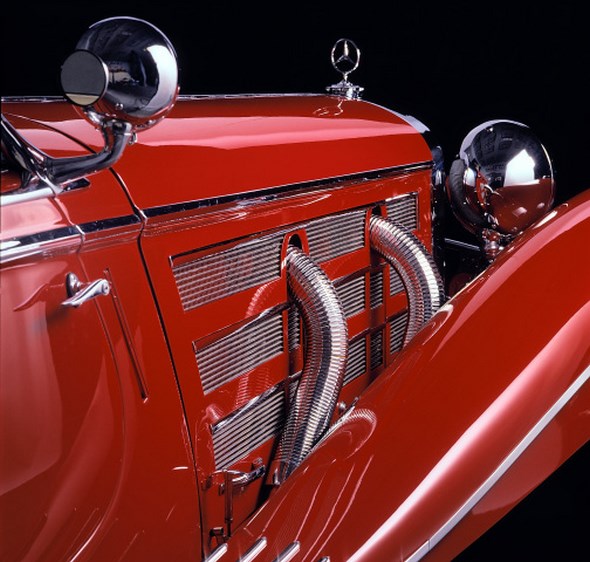
This was an experimental vehicle from August 1934 that was equipped with the M 24 eight-cylinder engine and a de Dion rear axle, possibly as a precursor to the planned successor to the “Grand Mercedes” (W 07).
Four open tourers with a 3880 mm wheelbase were delivered between April 1936 and January 1937 to the Reich Chancellery and other government agencies, where they actually went into service.

Apart from those four vehicles and the first experimental vehicle, there were two further examples of this model, one of which may never have received its coachwork.
The four vehicles delivered in 1936/37 were fitted with bodies at either the Sindelfingen or the Mannheim plant. Unfortunately, there is no unequivocal documentation on whether other vehicles were delivered or even produced.

In the Model 500 K and 540 K, the engineers in Stuttgart and Sindelfingen created automotive legends which through their very existence still continue to inspire, enthusiasm for Mercedes-Benz and offer persuasive testimony to the engineering and design expertise of the historic brand with the star.

It is thus no coincidence that both models are today among the most sought-after of classic cars. And understandably, for numerous visitors to the Mercedes-Benz Museum, the red-painted 500 K Special Roadster on display there is their favourite exhibit.

